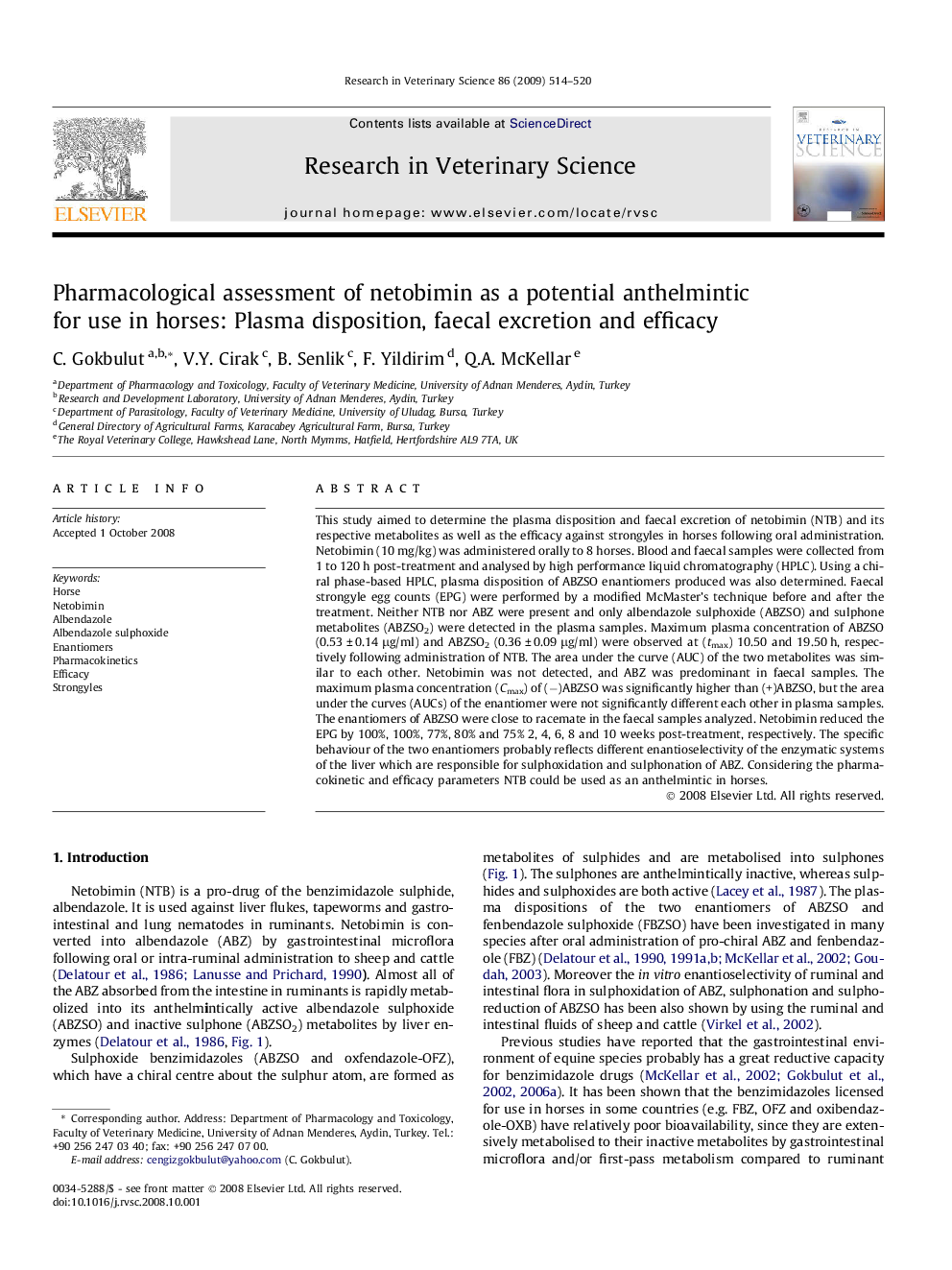| کد مقاله | کد نشریه | سال انتشار | مقاله انگلیسی | نسخه تمام متن |
|---|---|---|---|---|
| 2456133 | 1110530 | 2009 | 7 صفحه PDF | دانلود رایگان |

This study aimed to determine the plasma disposition and faecal excretion of netobimin (NTB) and its respective metabolites as well as the efficacy against strongyles in horses following oral administration. Netobimin (10 mg/kg) was administered orally to 8 horses. Blood and faecal samples were collected from 1 to 120 h post-treatment and analysed by high performance liquid chromatography (HPLC). Using a chiral phase-based HPLC, plasma disposition of ABZSO enantiomers produced was also determined. Faecal strongyle egg counts (EPG) were performed by a modified McMaster’s technique before and after the treatment. Neither NTB nor ABZ were present and only albendazole sulphoxide (ABZSO) and sulphone metabolites (ABZSO2) were detected in the plasma samples. Maximum plasma concentration of ABZSO (0.53 ± 0.14 μg/ml) and ABZSO2 (0.36 ± 0.09 μg/ml) were observed at (tmax) 10.50 and 19.50 h, respectively following administration of NTB. The area under the curve (AUC) of the two metabolites was similar to each other. Netobimin was not detected, and ABZ was predominant in faecal samples. The maximum plasma concentration (Cmax) of (−)ABZSO was significantly higher than (+)ABZSO, but the area under the curves (AUCs) of the enantiomer were not significantly different each other in plasma samples. The enantiomers of ABZSO were close to racemate in the faecal samples analyzed. Netobimin reduced the EPG by 100%, 100%, 77%, 80% and 75% 2, 4, 6, 8 and 10 weeks post-treatment, respectively. The specific behaviour of the two enantiomers probably reflects different enantioselectivity of the enzymatic systems of the liver which are responsible for sulphoxidation and sulphonation of ABZ. Considering the pharmacokinetic and efficacy parameters NTB could be used as an anthelmintic in horses.
Journal: Research in Veterinary Science - Volume 86, Issue 3, June 2009, Pages 514–520